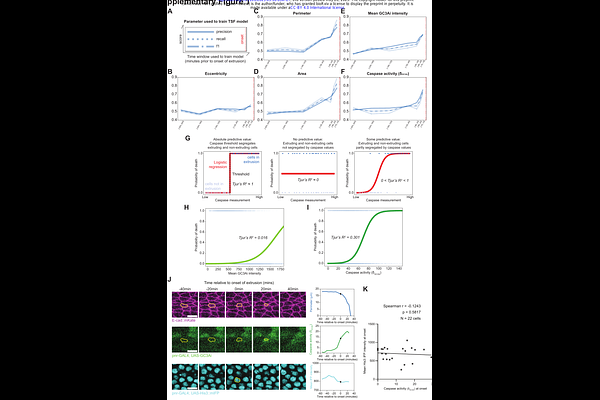Integration of past caspase activity biases cell elimination in vivo

Integration of past caspase activity biases cell elimination in vivo
Cumming, T.; Villars, A.; Davidovic, A.; Levillayer, F.; Valon, L.; Levayer, R.
AbstractThe fine tuning of apoptosis in epithelia is essential for regulating tissue size, shape, homeostasis and the maintenance of sealing properties. Regulation of cell death is mostly orchestrated by the activation of Caspases, proteases which were long thought to trigger an irreversible engagement in cell death. However, recent data in vivo and in vitro outline numerous non-apoptotic functions of caspases as well as quite ubiquitous sublethal activation of effector caspases during development. Yet, it remains unclear in many instances what drives the bifurcation between cell death engagement and cell survival upon caspase activation. The existence of a caspase activity threshold was generally considered to underpin this binary decision, but this was never assessed quantitatively in vivo especially at the single cell level. Using quantitative live imaging combined with machine learning and optogenetics in the Drosophila pupal notum (a single layer epithelium), we reveal for the first time the existence of a large heterogeneity of caspase sensitivity between cells, as well as the existence of distinct spatial domains with low or high sensitivity to caspases. Using correlative and perturbative experiments, we outline the central role of past exposure to sublethal caspase activity which sensitises cells for apoptosis for several hours. Integrating information about past caspase activation is sufficient to explain most of the global pattern of caspase sensitivity and predict at the single cell level which cells will engage in apoptosis. Finally, we demonstrate that past sublethal caspase activation in a subset of cells is sufficient to bias cell elimination at the clonal and single cell level, thus revealing an alternative mechanism of physiological cell competition. Altogether, this work reveals for the first time the existence of a new layer of apoptosis regulation in vivo downstream of effector caspases which can be developmentally regulated and bias clonal selection and the spatial pattern of cell death.